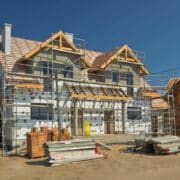Home price reductions are becoming more common as builders seek to maintain buyer interest. This shift in strategy comes amid waning market confidence, a trend that hasn’t been seen since late 2023. Let’s explore why home price reductions are happening and what it means for the housing market.

Why Are Home Prices Being Reduced?
According to Market Watch, builders are slashing prices to attract buyers. With interest rates rising and economic uncertainty, many potential homebuyers are hesitant. By reducing prices, builders hope to stimulate demand and keep the market moving. For example, about 25% of builders cut prices in May, up from 22% in April, according to the NAHB. The average price cut was 6%.
Market Confidence and Home Price Reductions
The decline in market confidence is a significant factor. In November 2023, confidence in the housing market began to falter. This led builders to adjust their pricing strategies to reflect the new market realities. Reduced prices are a direct response to this shift in sentiment, aiming to balance supply and demand. The three gauges that underpin the overall builder-confidence index fell. Builders were gloomy about current sales conditions, with the gauge falling 6 points. They were also downbeat about future sales, with the gauge dropping by 9 points. Builders expect a drop in traffic from prospective buyers, with the gauge falling by 4 points.

Benefits of Home Price Reductions
- Affordability: Home price reductions mean more affordable options for buyers.
- First-Time Buyers: Particularly beneficial for first-time buyers who may have tighter budgets.
- Upgrading Homes: Attractive for those looking to upgrade to a larger or more modern home.
- Quicker Sales: Reduced prices can lead to quicker sales, helping builders move inventory faster.
- Cost Savings: For example, a 5% price cut on a $400,000 home makes it $20,000 cheaper, potentially speeding up the sale and saving buyers money.
Challenges with Home Price Reductions
- Perceived Value: Lower prices might impact the perceived value of a home, making it seem less desirable.
- Market Expectations: Reduced prices can set new price expectations, affecting the broader housing market.
- Property Devaluation: Existing homeowners might feel the pinch if reduced prices devalue their properties, potentially leading to negative equity situations.

Sales Incentives Beyond Price Cuts
More builders were using sales incentives—other than price cuts—to improve sales in May, up to 59% from 57%. These incentives can include upgrades, closing cost assistance, or special financing offers, which help make homes more appealing without directly lowering prices.
Examples of Home Price Reductions
In various regions, builders are adopting price reduction strategies to keep up with the changing market dynamics. For example, in some suburban areas, prices for new builds have dropped by up to 10%. This approach helps to maintain sales momentum but also reflects the current economic climate. For instance, in a suburban neighborhood outside of a major city, a builder might reduce the price of a $500,000 home by $50,000 to attract buyers who are hesitant due to rising interest rates and economic uncertainty.
Another example is a new housing development where the average home price has been slashed from $400,000 to $360,000, making it more affordable for first-time buyers. These price reductions not only boost sales but also help builders compete in a crowded market, ensuring that their properties remain attractive to potential buyers.

Home price reductions are a significant trend in today’s housing market. They reflect builders’ responses to reduced market confidence and aim to keep buyer interest alive. Understanding these trends can help buyers and sellers navigate the current real estate landscape effectively.
Related posts:
 Decline in Home Prices: Anticipating a Shift in 2024
Decline in Home Prices: Anticipating a Shift in 2024
 Maryland Governor Legislative Agenda: Military Families, Housing, and Public Safety in 2024
Maryland Governor Legislative Agenda: Military Families, Housing, and Public Safety in 2024
 Nashville’s Zoning Bills for Middle-Income Housing Spark Contentious Debate
Nashville’s Zoning Bills for Middle-Income Housing Spark Contentious Debate
 Tampa Affordable Housing Initiative Breaks Ground on New 188-Unit Building
Tampa Affordable Housing Initiative Breaks Ground on New 188-Unit Building
 Challenges Persist as Housing Market Faces Unyielding Conditions Ahead of Spring Buying Season
Challenges Persist as Housing Market Faces Unyielding Conditions Ahead of Spring Buying Season



